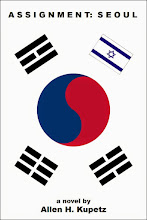
WHAT does the world really know about the regime of Kim Jong Il, which appears ready to yield to foreign pressure and bribes to close down the reactor at Yongbyon that has provided enough material for a handful of nuclear devices? The answer, despite defectors' tales and the best efforts of Western intelligence agencies, diplomats and academics, is still: much less than the known unknowns. That Mr Kim runs a vile regime is not in doubt, with North Korea's 20m-odd people the victims of backwardness, malnutrition and political repression. Yet so secretly does it conduct its affairs that speculation is easier than analysis.
Some known knowns. Since the mid-1990s North Korea's unique brand of Stalinism—even more horrifying than those tried elsewhere—has entered a process of slow disintegration. Famine during the 1990s is reckoned to have killed perhaps a tenth of the population. Only with difficulty can survivors still believe in the long-promised socialist paradise, or find fresh reservoirs of gratitude for Mr Kim.
Foreigners living in Pyongyang report a change in attitudes. Once in awe of authority, people now defy it. They break petty rules: sitting on the moving rail of the escalator; smoking beneath no-smoking signs; and blocking traffic by selling furniture in the streets, to the frustration of the white-gloved traffic ladies. More seditious still, people are breaking the seal on their radios that keeps them tuned only to the state frequency.
Another measure of changing attitudes: in bus queues or at sweet-potato stands, people are readier to chat to foreigners than they were just a few years ago. Signs of petty capitalism and informal markets, once unheard of, are everywhere. Crime is on the rise too, and where there are black markets, mafia-type protection rackets probably follow. Chinese lorry-drivers complain of highway banditry, as gangs jump on to the back of slow-moving lorries and pull off goods.
Despite Stalinism's decay, Andrei Lankov of South Korea's Kookmin University suggests that the regime, which during the famine may have faced collapse or military rebellion, now actually feels more sure of itself. It has restricted the operations of foreign aid organisations. And it has largely recentralised the distribution of food and other essentials, after the system broke down during the famine. So all the rewards in the form of cash and commodities that North Korea expects to reap from its nuclear diplomacy could easily be used to reinforce the command economy, and buy loyalty.
In recent months a crackdown has taken place along the porous border with China. The law is once again being rigorously applied to North Koreans caught crossing illegally. The punishment is five years in prison camp. There is little sign that the gulag is any less brutal: a report by Christian Solidarity Worldwide, a human-rights group, pieced together what is known from defectors' accounts and satellite imagery. It put the prison population at 200,000, with 500,000-1m having died there over the years.
As for the elite, what little is known suggests a regime riven by bickering. It appears to have problems filling government posts: the job of foreign minister has been open for months. In April the prime minister was replaced by Kim Yong Il, who analysts suspect may be more hardline. Political advisers from the army seem again to have growing influence. For a while after the six-nation agreement in February on North Korea's denuclearisation, the usual officials in military uniform suddenly stopped accompanying Mr Kim in public; Mr Kim also visited relatively few military sites compared with civilian ones. The uniforms are now back.
In May Mr Kim himself stopped appearing in public, prompting speculation about his health, with rumours of diabetes and heart problems. His health is perhaps the regime's most closely guarded secret, so all this is pure conjecture. But it is known that he is 66 and was once a heavy smoker and drinker.
If Mr Kim was frail, he has bounced back, appearing this week with China's foreign minister. Still, inevitable gossip has been fanned about succession in this communist dynasty. Mr Kim's two younger sons, in their 20s, have started appearing in public with their father for the first time since their mother died in 2004. Mr Kim's eldest son (by an earlier mistress), Kim Jong Nam, 36, had been written off as a potential successor after the embarrassment of being caught entering Japan with a fake passport to visit Tokyo's Disneyland. He has recently been living in Macau, but this year popped back for his father's birthday. Some of the fuss that North Korea made in the six-party talks about funds frozen in a Macau bank may have been for his benefit.
South Korean analysts, in particular, predict a collective leadership after Mr Kim's death, and the regime's indefinite continuation. But an orderly succession cannot be taken for granted. And if the regime were suddenly to collapse, one cast-iron certainty is that the countries that would have to deal with the mess—chiefly South Korea, the United States and China—are wholly ill-prepared.
